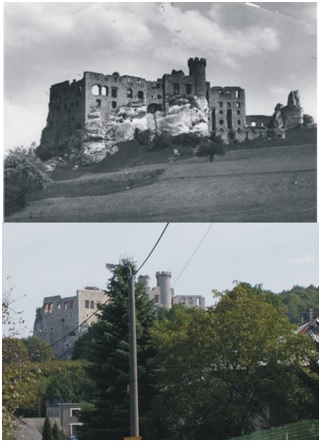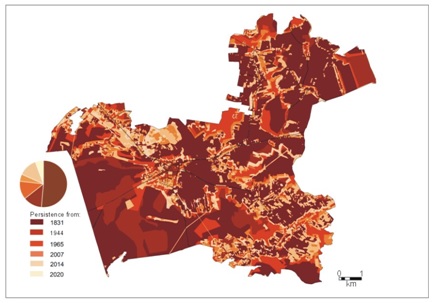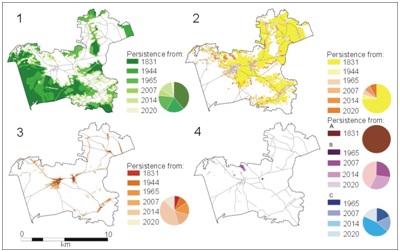The landscape is constantly changing. These changes are not always favourable for ecosystems or harmonious spatial development. Persistence of land use is one of the most important landscape values, helpful, among others, in the procedure of strengthening protection of particularly valuable areas.
How to determine the persistence of a landscape and to indicate the oldest landscapes? How to show their ranges on a map? Prof. Urszula Myga-Piątek and Dr. Anna Żemła-Siesicka tried to answer these questions, which are important contributions to the research on the persistence of cultural landscapes. On the example of the Częstochowa Upland and a detailed case study of Ogrodzieniec, using historical and contemporary maps, the authors indicated landscapes with the highest degree of persistence. Moreover, the authors introduce a new concept into scientific discourse – landscape isochrones. Using isochrones it is possible to indicate on a map the location of the oldest, unchanged landscapes. The research constitutes an initial stage of work on a new methodology of visualising historical variability of landscapes.
Żemła-Siesicka, A.; Myga-Piątek, U. A landscape persistence assessment of Częstochowa Upland. A case study of Ogrodzieniec, Poland. Sustainability 2021, 13 (11), 6408

Growth of forest areas and settlements in the vicinity of the castle ruins in Ogrodzieniec. At the top, a photo from the period 1918–1939 (photo from the National Digital Archive collection), at the bottom, a photo from 2020 (author’s own collection).

Isochrones of landscape persistence of the Ogrodzieniec municipality.

Isochrones of landscape persistence for individual landscape types. 1—Forest, 2—Agricultural, 3—Settlement, 4A—Fortified, 4B—Industrial, 4C—Water reservoirs.





